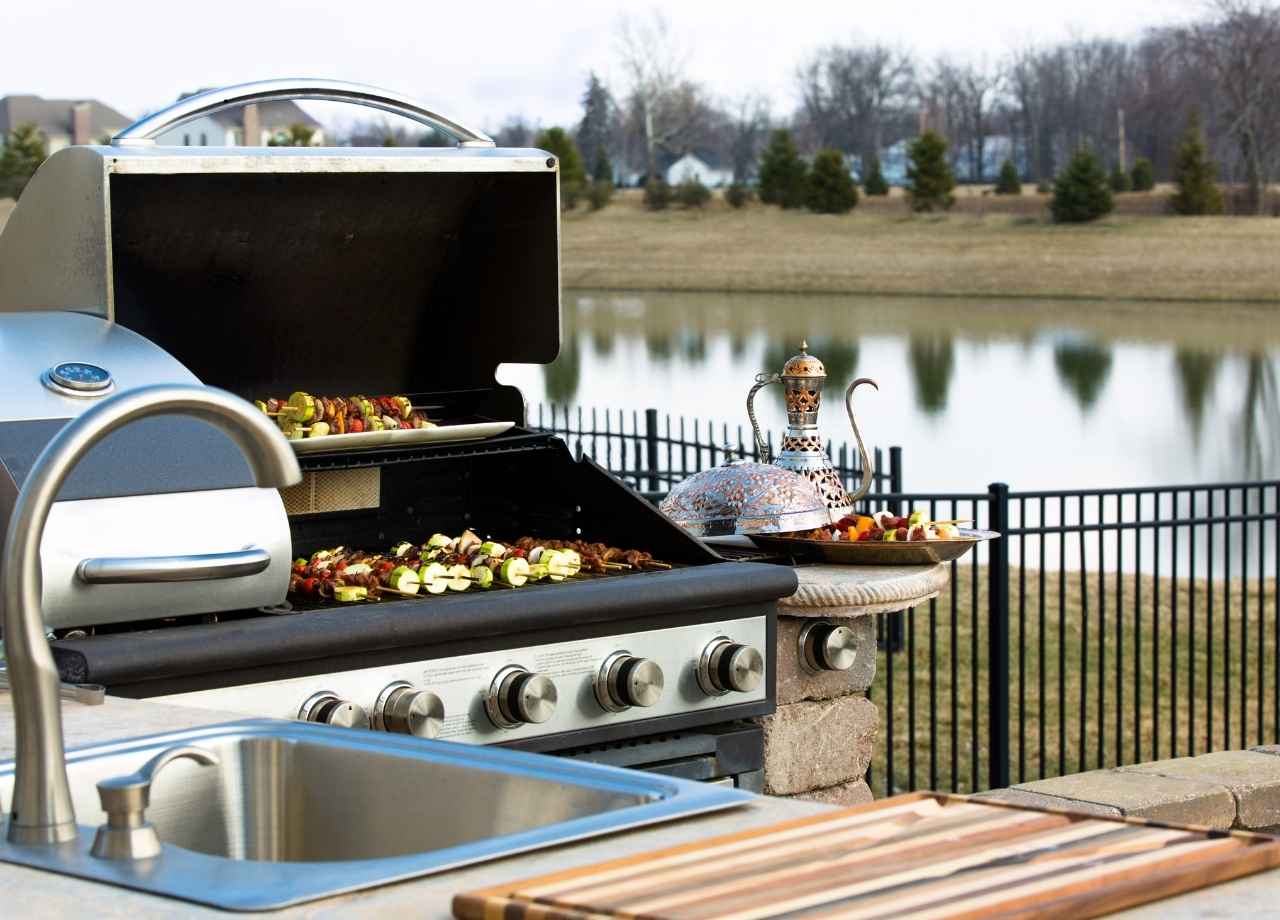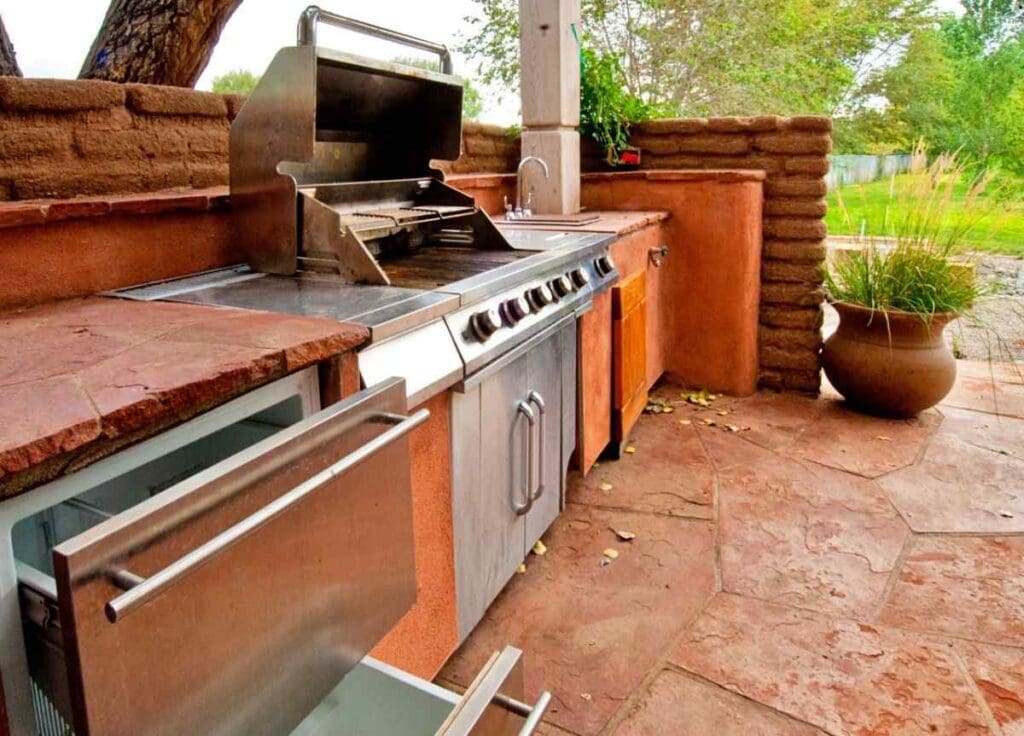
Designing the Perfect Outdoor Grill Island for Your Backyard
Designing an outdoor grill island isn’t about copying the neighbor’s setup or picking something straight from a catalog. It should feel like an extension of your lifestyle—a space that fits the way you cook, host, and unwind. If you get it right, it becomes more than just a place to fire up burgers. It turns into the anchor of your backyard, where meals are shared, drinks are poured, and memories stack up with the smoke.
Calico Outdoors helps homeowners in Jacksonville customize their outdoor kitchens to handle the heat, humidity, and salt air that define the Florida coast. When you’re building something that lives outside, it’s worth doing it with intention.
Table of Contents
Start with the Way You Cook
Everyone has a different cooking style, and that should drive the layout and features of your grill island. If your grilling is all about steaks and chops, then a high-powered gas grill might be your centerpiece. If you’re into slow-smoking ribs on Sunday afternoons, then carving out space for a kamado or pellet smoker makes sense. Some people want a built-in griddle for smash burgers and breakfast outside. Others lean toward hybrid solutions that allow for charcoal, gas, and infrared burners all in one zone.
The way you prep and plate also matters. Are you constantly reaching back inside for olive oil, salt, tongs, or serving trays? Your grill island should reduce the number of trips into the house. Think integrated storage, prep counters, refrigeration, and even warming drawers if you’re feeding a crowd. The more self-contained your outdoor setup is, the smoother it runs.
Get the Layout Right the First Time
A grill island shouldn’t feel like an afterthought dropped into the corner of the yard. The layout is what separates a basic setup from a fully functional outdoor kitchen. At minimum, you need clear zones for prep, cooking, and serving. The triangle that exists in a traditional kitchen—fridge, sink, stove—can still apply here, even if the sink is swapped for an ice chest or cocktail station.
Don’t wedge everything into a straight line if your space can handle more. L-shaped and U-shaped islands offer more flow and storage potential. With enough room, you can add counter seating so guests can gather without getting in your way. If you have a pool, firepit, or shaded lounge area, think about how the grill island connects with those spaces. Movement and visibility matter more than most people expect.
Materials Make or Break the Build
Florida’s weather is tough on outdoor kitchens. Salt in the air corrodes cheaper metals fast, and humidity pushes cheap cabinetry to warp or swell. Skip anything that’s designed for “occasional use.” A permanent grill island should be built like it’s going to be there for a decade.
Stainless steel is the go-to for a reason, but not all stainless is created equal. Look for marine-grade (like 304 or 316) if you’re close to the coast. For the structure, masonry or steel framing wrapped in stone or weatherproof panels offers the best long-term durability. Concrete counters work great in our climate, especially if sealed properly, but some people prefer granite or porcelain for a more polished look.

The finish matters, too. You don’t want a surface that gets scorching hot in the sun, or one that stains the first time you spill a glass of red wine. Choose materials that balance durability, cleanability, and comfort.
Utilities: Plan Before You Build
Running power, water, and gas to your grill island isn’t complicated, but it needs to be planned upfront. Retrofits cost more and often limit what you can do. If you’re adding lighting, refrigeration, or an outdoor sink, those need dedicated lines. If you’re thinking of adding a natural gas grill instead of propane tanks, make sure you have the right permits and connections.
Don’t forget about ventilation. Built-in grills need proper venting, especially under a pergola or in a covered patio. A vent hood or vent panels in the cabinetry help keep heat and smoke from pooling. Ignoring this is one of the biggest mistakes people make when designing an outdoor kitchen.
Add Features That Match How You Entertain
A great grill island does more than cook. It becomes the hosting hub of the backyard. That means planning for the way you entertain. If you always have friends over for game day, then a mounted TV nearby and a bar-style counter with stool seating is a no-brainer. If your weekends are more about family dinners, then a wider prep surface, warming drawers, and under-counter fridge for drinks can make life easier.
People often ask if an outdoor sink or dishwasher is worth it. It depends on how much you plan to prep and clean up outside. For some, it’s essential. For others, it’s just extra plumbing they’ll rarely use. Be honest with yourself here—every feature should serve a purpose, not just check a box.
Lighting also plays a bigger role than many expect. You’ll want task lighting over the grill and ambient lighting around seating or bar areas. Skip the solar stakes and invest in integrated lighting that you can control with a switch or app.
Shade and Shelter Change Everything
Grilling in the Florida sun gets brutal fast. Adding shade transforms how often you use the space. A pergola with retractable awning or built-in canopy makes a huge difference. It keeps things cooler, reduces UV damage, and allows you to grill even when there’s a pop-up shower. If you want to take it up a notch, motorized power screens add another layer of protection against bugs and intense afternoon heat.
Shelter also helps with comfort. Ceiling fans, mounted heaters, and weather-resistant audio all work better when the space is partially covered. Once you start spending serious time outside, these upgrades stop feeling like extras and start feeling like essentials.
Think Beyond the Grill
A true grill island isn’t just a grill. It’s a station for outdoor living. Some people go all-in with pizza ovens, drop-in coolers, wine fridges, or built-in kegerators. Others keep it simple but functional, focusing on prep space, counter height, and a spot to plug in a blender or speaker.
Whatever direction you go, keep your decisions aligned with how you want to use the space. Don’t be pressured into overbuilding if you won’t use it all. But don’t underbuild just to save a little up front—modifying later is rarely easy or cheap.
When it’s built right, an outdoor grill island becomes a place you naturally drift toward. It doesn’t just cook meals. It holds the laughter, the quiet coffee mornings, the late-night conversations. The details are worth sweating.
If you’re in Jacksonville and want something that stands up to the climate and fits your lifestyle, Calico Outdoors can help you design and build a grill island that’s made to be used, not just admired.
